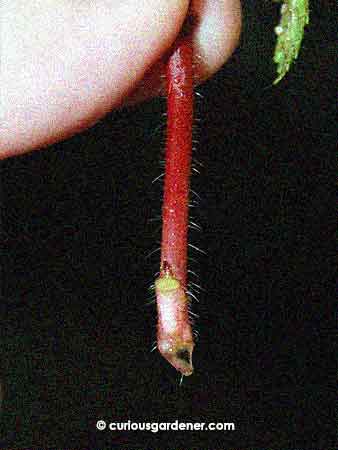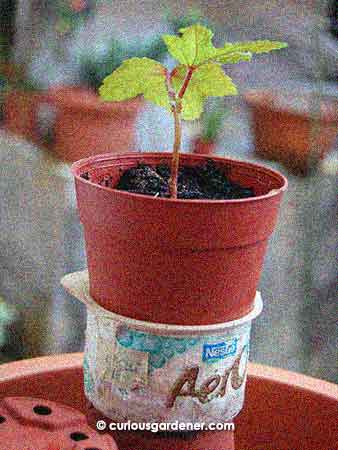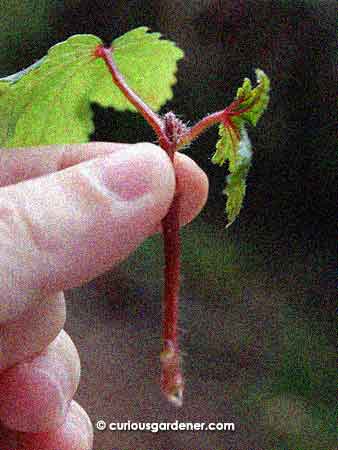This is the third time this has happened with this crop of burgundy okra:
In fact, this is the second time this has happened to this particular plant.
It being the rainy season here at the moment, means that the snails are out in full force in our garden. I haven’t complained here much, but I have been at war with the snails over the last couple of months. I thought that planting out my young plants after hardening them off would help, but that has not been the case.
I had three burgundy okra plants – precious because they were from the last of my seeds from Novice Gardener. They were over 20cm tall when I planted them out. By the second day, one plant had disappeared completely, and another had been eaten at the base of the plant. Needless to say, I was horrified to see the top half of the stem lying on the ground!

Looking at the base of the broken plant stem, I thought that it couldn’t hurt to get it into water and see if it could grow new roots
Fortunately, it had been a cool day and the top half of that plant hadn’t wilted much. I figured it could have a fighting chance at rooting again, so I got it into a small pot that I watered heavily, then thought better of things and found a small container that the pot would fit nicely into, and made myself a makeshift self-watering container.
To help the plant a little more, I pruned all but two leaves and made sure that the reservoir didn’t dry out. Within two weeks, the cutting had started growing new leaves and had roots poking out from the bottom of the pot, reaching into the water below. Happily, I planted it out.

Self-watering containers are very useful when you can’t afford to let a plant’s growing media dry out. Here, I’ve settled the base of the pot into an old ice cream cup. When the cup has water in it, the pot won’t tip over. Making sure that the two containers fit securely also means that mosquitoes can’t get in and lay eggs.
In the meantime, a second incident happened to the other plant. One of my dogs was attracted to the scent of the fertilizer I had used, and went digging around the plant, damaging the stem and forcing me to once again cut off the top half to root in water.
The first rescued plant was planted in its place, and I was satisfied that I would still have three plants when all was said and done.
However, the snails decided to shake my sense of security by attacking the replanted plant, and that poor plant is now sitting in water again. I guess this is a sign to me to keep these plants in pots that are well surrounded by snail bait. Thank goodness they root so easily.
© 2013 curiousgardener.com All rights reserved.

